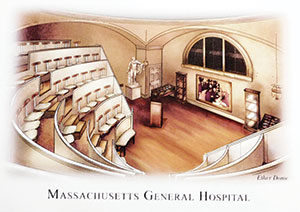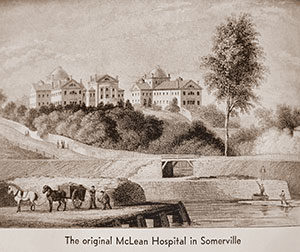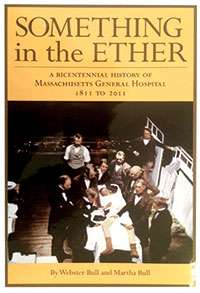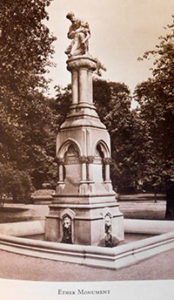 Eagle Feathers #124 – A Pain in the Neck
Eagle Feathers #124 – A Pain in the Neck
By Bob (Monty) Doherty
On October 16, 1846, painless surgery was first performed at Massachusetts General Hospital’s Bulfinch Dome to remove a tumor from a patient’s neck.
The surgeon was Dr. John Collins Warren, nephew of Revolutionary War General and Doctor Joseph Warren of Bunker Hill fame. At one time, Somerville almost named itself after that patriot. Dr. John Warren, like every other physician at that time, was at war against suffering.
On that memorable day, he and Dr. William T.G. Morton and others observed the defeat of pain. The successful application of ether as a surgical anesthetic was the answer. This was the birth of mankind’s medical miracle, an end to surgical pain.

The next day, The Boston Evening Journal reported on the successful operation that took place at McLean Hospital. Somerville native and Harvard president Edward Everett first made news of the operation public in one of his speeches.

The operation created a “who’s who” dilemma. Who was to be given credit? Three New England men fought for the honor. They were Dentist Horace Wells, Dentist William Morton, and Doctor Charles T. Jackson who were acquaintances.
The recurring debate goes on today. Wells was the first to administer ether in a failed mixing attempt at Mass General Hospital. When the patient cried out in pain, Wells was laughed out of the operating chamber, never to return. Discouraged and dejected, he moved to New York City where he sank into chloroform addiction. He took his own life in the city’s Manhattan Detention Complex, also known as the Tombs, while being held for crimes he committed under the drug’s influence.

Through the years, many people have thought that the story of Horace Wells was the inspiration behind Robert Lewis Stevenson’s novel, The Strange Case of Dr. Jekyll and Mr. Hyde.
Dr. Charles T. Jackson was a highly regarded, Harvard-educated geological surveyor and chemist. After the Wells embarrassment, his friend William Morton picked up the torch and ran with it. He told his story and shared information with Dr. Jackson, developing a mask for ether delivery. Next, they received permission from MGH for a demonstration, which was successful.

One would think that would be all, but the story did not end there. How could the miracle discovery of ether, the vapor that eliminated human pain, cause so much agony to its creators? The answer was in who received the credit for the discovery. All three men battled each other for the rest of their lives for fame, glory, honor, and homage for themselves. In the end, their lives were broken.
Morton, who held the central role in the ether controversy, collapsed and died in New York City’s Central Park having attained no financial award or profit. He was only 49 years old. Lastly in 1873, Dr. Jackson was committed to the section of Somerville’s McLean Hospital known as the double domes, where he died seven years later. There were still other claimants. One was Dr. Crawford Long of Athens, Georgia, who asserted that he had used ether in surgery as early as 1842, the year of Somerville’s division from Charlestown.

In 2018, Massachusetts will celebrate the 150th anniversary of the first statue built in the Boston Public Garden, the Ether Monument, commonly called the Good Samaritan Statue. The memorial doesn’t mention the first men who practiced with the mysterious vapor … it simply praises ether and its wondrous contribution to mankind.












Reader Comments